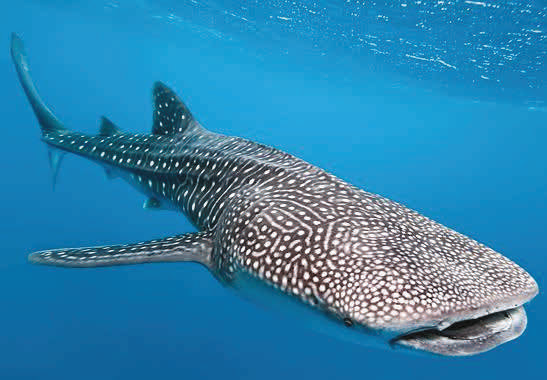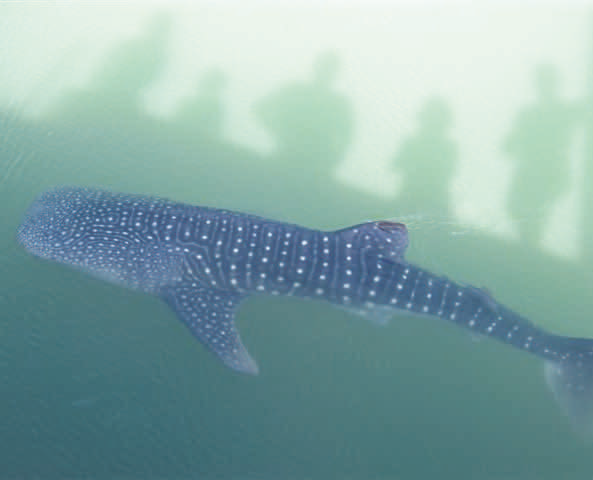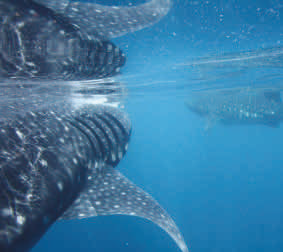Whale Shark
Whale shark
Rhincodon typus
Description

| Length 10-12m |
Weight 20 tonnes |
Lifespan 70-100yrs |
The whale shark is the world’s biggest fish. Its massive body, broad head, rounded dorsal fin and crescentshaped tail are decorated with a pattern of light spots and stripes that can be used to identify individuals. Although often seen swimming near the surface, whale sharks can dive to depths below 1000 metres.
Diet and habitat

Whale sharks are filter-feeders. They feed by sucking water into their mouths and sieving krill, larvae and small fish through mesh-like screens in their gills. They do this when swimming but may also hang vertically with mouths agape, letting food and water pour in. Whale sharks inhabit deep water, shallow coastal seas, and coral atolls and reefs.
Breeding

| Maturity 30 years |
No. young 300 |
Gestation Unknown |
As with other sharks, eggs are fertilised inside the body. The whale shark is ovoviviparous (also called ‘aplacental viviparity’) with the female giving birth to live young 40 to 60cm long after they have hatched within her body. Evidence indicates she retains sperm from one mating and produces a steady stream of pups over a prolonged period.
Distribution

Whale sharks are found in warm seas between about 30º north and south of the Equator. They are thought to be migratory with migration influenced by food availability. A good place to see them is Ningaloo Marine Park after the coral spawning in in April. They may also be seen between Kalbarri and Shark Bay in December and January.
Status

Threats include loss of food species through habitat loss, coastal development/pollution and boating conflicts. The greatest threat to whale sharks is trade in whale shark parts, including fins.
Fact sheet
SHARK BAY
World Heritage



